Leanne and Garry Hall at The Mole, Warren, NSW have gone from running a destocked dustbowl to having already receiveed more rain in 2020 than for all of 2018 and 2019.
What stock they had left has been away on agistment for the past nine months while the Halls literally spent every day waiting and hoping.
And they really got it.
In late January a localised storm delivered an amazing 40mm – the Halls could not believe their luck.
But it just kept getting better.
“By the end of February we had measured 118 mm,” Garry said.
“In March it was another 79mm; plus 125mm so far for April – with maybe more due later this week,” he said.
“Absolutely nothing can describe the relief, and the pleasure, to finally see our country start the long journey back to health. The smell of new vegetation bringing with it hope and optimism.”
By February they finally had what was left of the herd’s breeding nucleus home.
“However, the conception rate was a disappointment – for a very short moment,” Garry explained.
“Because once again the benefit of Team Te Mania shone through and we were able to purchase some fantastic cows from members Stephen and Sue Brain and Colin and Karen Henke,” he added.
“A wave of three day sickness came to test our resilience as the flies and mosquitoes arrived’ closely followed by coronavirus just as we had started to pinch ourselves to make sure we weren’t dreaming.
“But none of that has taken the shine off our water, we are ready to face 2020 with a renewed spark.”
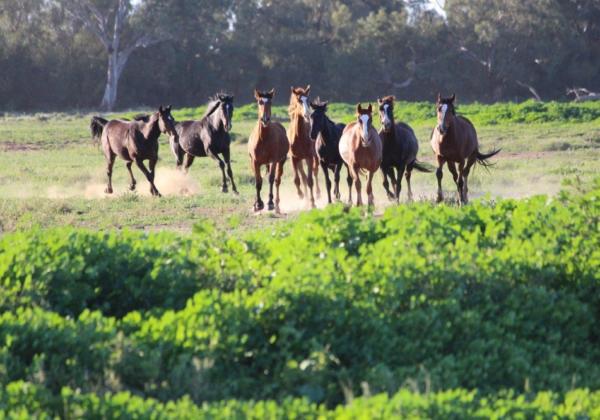 Calling the horses
Calling the horses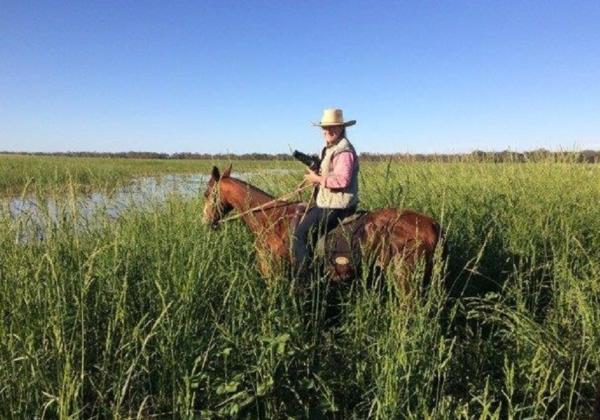 Leanne Hall
Leanne Hall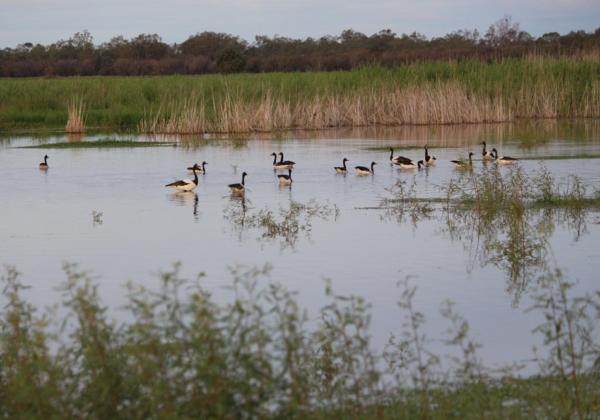 Birdlife is back
Birdlife is back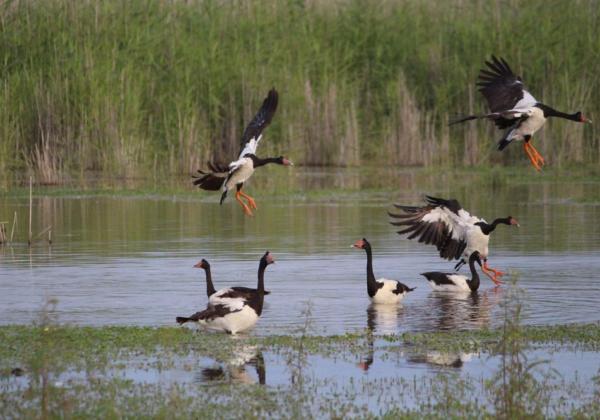 Magpie Geese
Magpie Geese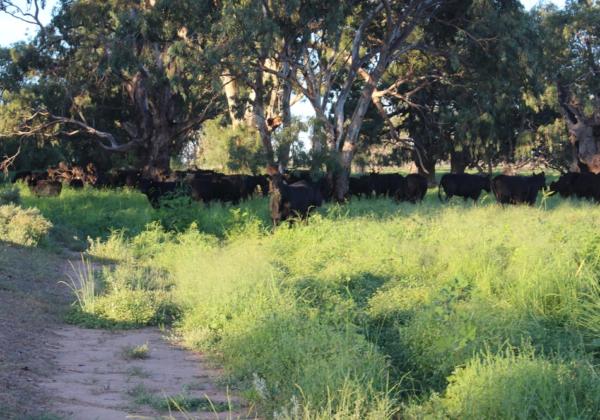 Team TMA cows from Brains and Henkes (Mumbannar)
Team TMA cows from Brains and Henkes (Mumbannar)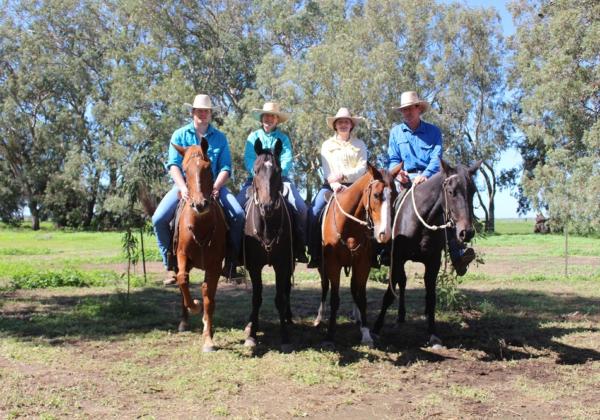 Teague, Leanne, Jet and Garry Hall
Teague, Leanne, Jet and Garry Hall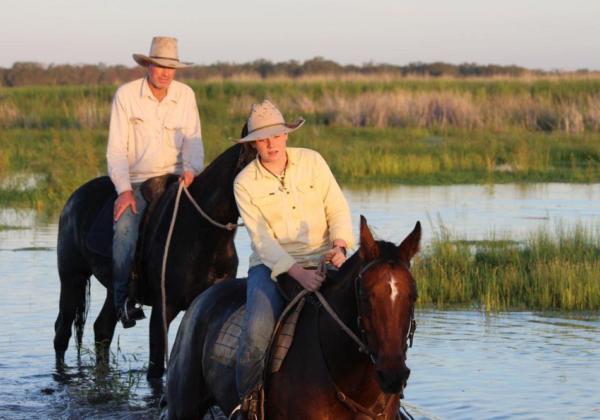 Garry and Jet Hall
Garry and Jet Hall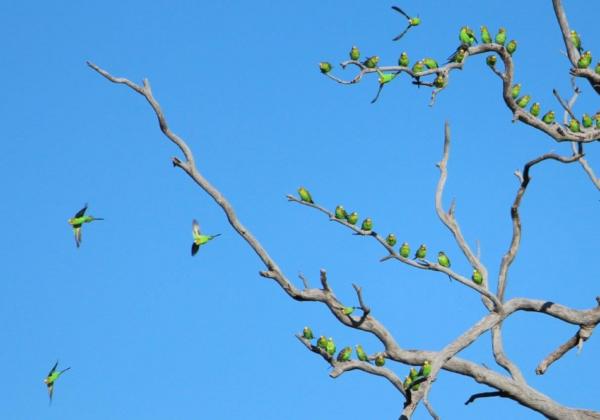 Budgeriagars
Budgeriagars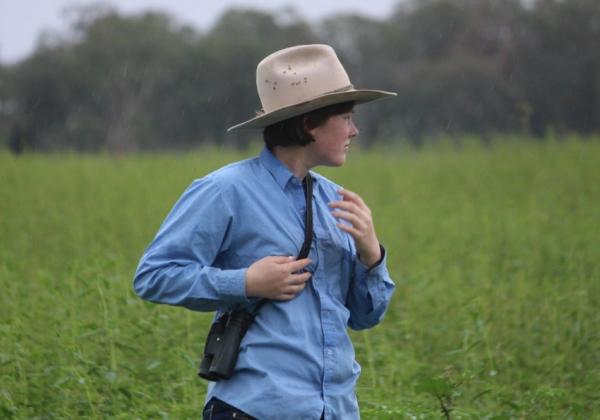 Jet Hall
Jet HallIn the Syndey Morning Herald 24/4/2020, Peter Hanan reports – Garry Hall, a cattle breeder, has had more rain since February than for all of 2018 and 2019, and the Macquarie River is flowing past his property at the rate of a billion litres a day, reports
And yet, as welcoming
as the rains have been, they are well short of drought-breaking for his farm in northern NSW and the nearby Ramsar-listed wetlands. Both have struggled through a once-in-a-century dry spell.
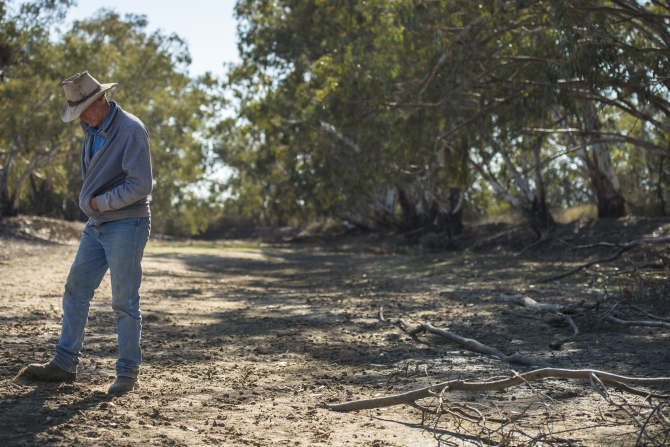
“A large area of the Macquarie Marshes hasn’t seen water yet,” Mr Hall said. “It’s pretty important to get it in there to start the long journey back”.
That journey, though, has begun after widespread rain over NSW and other eastern states this year.
Catchments have become wetter so follow-up falls will be more likely to create run-off and reach dams across the Murray Darling Basin. Odds for such rainfall have also improved for coming months.
Bureau of Meteorology charts show moisture level in the top 100 centimetres of soil improved sharply between last December and last month. NSW shows some of the biggest changes.
Still, Matthew Coulton, the bureau’s acting general manager for water, said “drought means something different to everyone you talk to … I don’t think it’s over for anyone yet”.
“It’s important to remember that long droughts can have periods of green. It was 36 months of very hot and dry weather that led to the conditions we saw at Christmas,” he said.
“It will take a lot more than two or three wet months to fill dams and get regional communities back on their feet.”
Little of the rain has reached the big dams on the western slopes of the Great Dividing Range. Burrendong Dam, which supplies much of the water for the Macquarie River, remains at 16.4 per cent full, while Keepit Dam on the Namoi is at just 13.7 per cent.
WaterNSW data shows catchment inflows of major rivers so far lag the most big flows in 2016-17.
Those dams and rivers, though, could be in for a relative wet winter and even into spring, as climatic conditions favouring above-average rains set in, according to the latest bureau outlook.
Waters in the Indian Ocean off north-western Western Australia are warmer than usual, a set-up that typically produces clouds that deliver moisture across Australia’s centre and south-east, said Andrew Watkins, head of the bureau’s long-range forecasting.
“If one of those north-west cloudbands interacts with a cold front or a cut-off low − that’s when we get some big rainfall totals over a large area,” Dr Watkins said.
With higher soil moisture levels and more cloud cover, overnight temperatures across most of Australia will also likely be milder than normal, he said. Days will be closer to average warmth.
“The drought’s broken when Burrendong is full,” said Mr Hall, adding the outlook for the Macquarie catchment is promising.
“Orange and Bathurst haven’t had much rain − you wouldn’t say it’s oozing water,” he said. Still, “it’s primed, it’s wet and ready to go”.
Article by – Peter Hannam , The Age April 27, 2020





